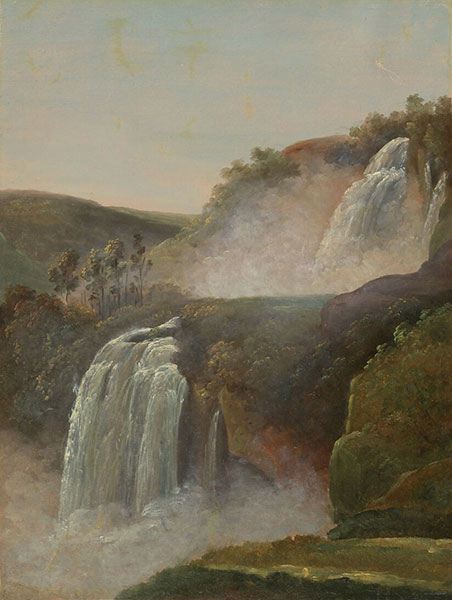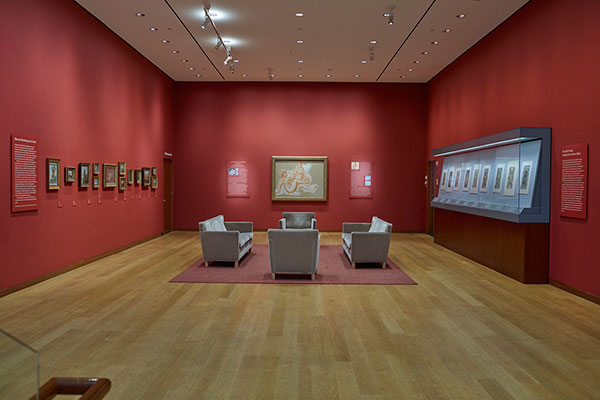
To eighteenth- and nineteenth-century European artists, the ephemeral qualities of weather and light were as integral to their landscape paintings as the terrain itself. Artists such as Pierre Henri de Valenciennes wrote about the importance of getting the tone of the sky just right, and asserted that outdoor studies undertaken at sunrise or sunset should be completed in no more than thirty minutes so that one could capture these fleeting phenomena as they truly appeared. The oil sketch was the ideal medium for investigating such concerns of light and air. Whereas solid subjects such as trees and mountains could be studied through drawing, painting was the only way to document the intangible atmospheric conditions of a given moment. Artists brought their paints outdoors to undertake small sketches that recorded the weather and light they experienced. The haze of a hot summer's day, the mist of a thundering waterfall, rain pelting from a lowering sky, and the glow of a dying sunset are just a few of the complex atmospheric effects explored in these studies by French, Swiss, and German artists.
This exhibition is organized by Elizabeth Eisenberg, Moore Curatorial Fellow, Department of Drawings and Prints.
Capturing Atmosphere: European Nature Studies in Oil highlights works from the collection of oil sketches given jointly to the Morgan and the Metropolitan Museum of Art by Eugene V. Thaw, a trustee of both institutions.
Pierre Henri de Valenciennes or Circle
(French, Toulouse 1750–1819 Paris)
Waterfalls at Terni
Oil on paper
17 1/2 x 14 3/8 in. (44.5 x 36.5 cm)
Thaw Collection, Jointly Owned by The Metropolitan Museum of Art and The Morgan Library & Museum, Gift of Eugene V. Thaw, 2009
2009.400.119

